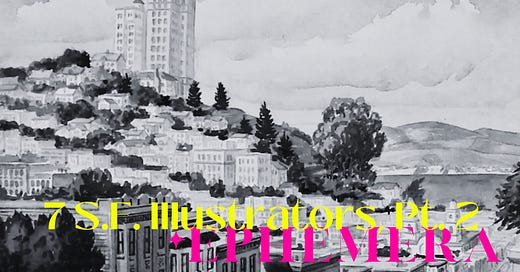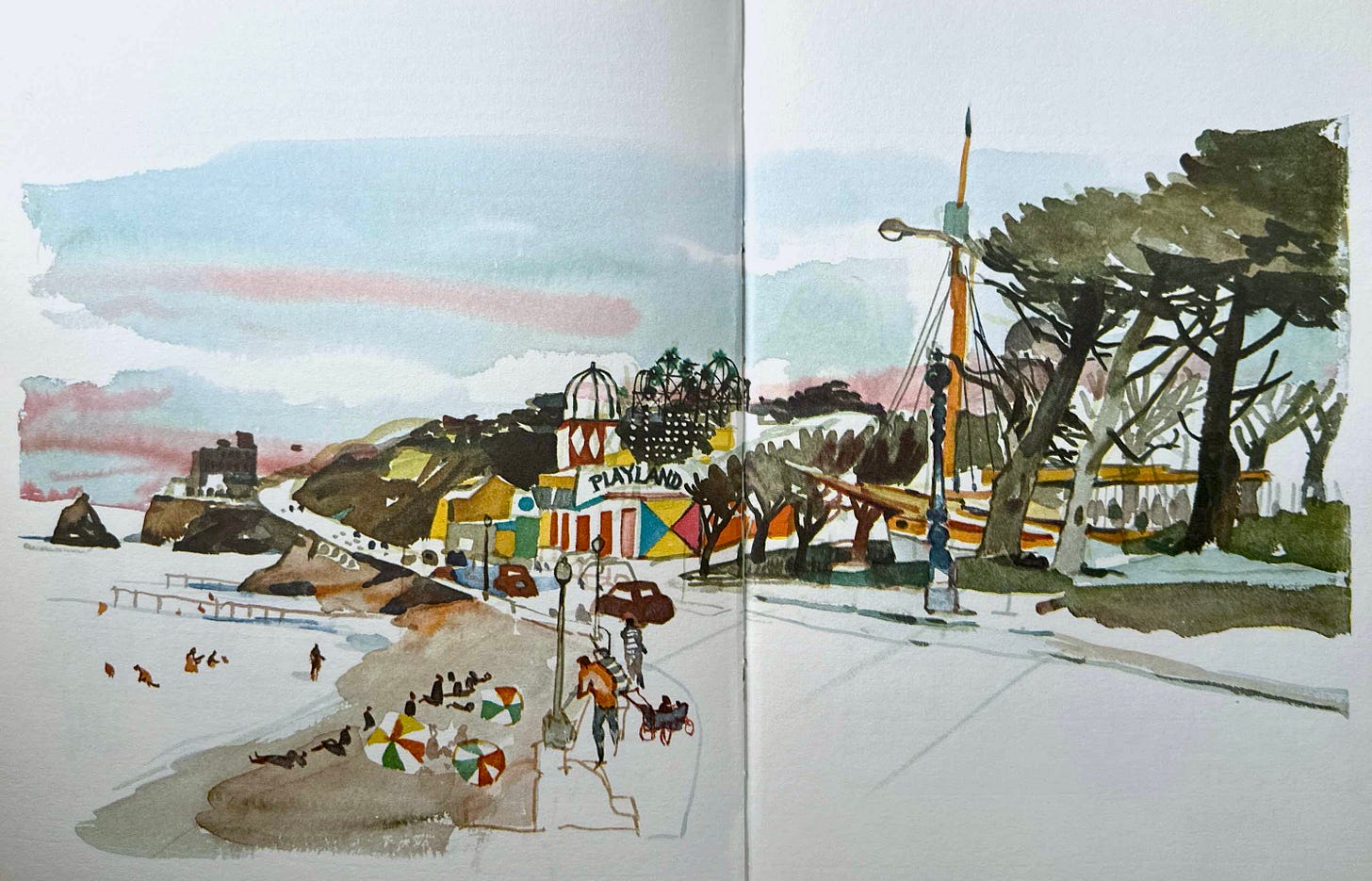FYI: You may need to click through from email to read in full!
Unless cited otherwise, images in this post have been scanned by the author from books in my collection:
San Francisco The Cool Gray City of Love by Jean Porter and Leonard Cahn
San Francisco City on Golden Hills by Herb Caen and Dong Kingman
Etchings of San Francisco Through the Years by Alec Stern
Cable Car Days in San Francisco by Edgar M Kahn with William Wilke
Images by Frank Serratoni were found online at art auction sites.
Images by Paul Madonna were found online at the artist’s website or The Nob Hill Gazette.
Images by Michele Bell were found online at the artist’s website.
Please visit Part 1 of this post to read my introductions to these San Francisco illustrators.
Why cities and illustrators? Landscapes are made of structures, infrastructures and space, so although we may not realize it amidst the hubbub of modern life, we are all in a landscape all the time. As life and technology moves through a landscape it shifts constantly, taking on a new character — subtly at first, more distinctly over time.

While San Franciscans accept our famously analog, handmade of wood, Cable Cars as a fact of life, when you consider that they’re one of the only things that has gone unchanged in our city over the years, their place in modern life is pretty incredible. We take it for granted that they laze their way up the California Street hill every day, but do we consider the changes that have been made all around them? The cars, the architecture, the fashion, the careers, the sounds, the smells…all the sensory makeup of the city keeps shifting, but the Cable Cars remain.
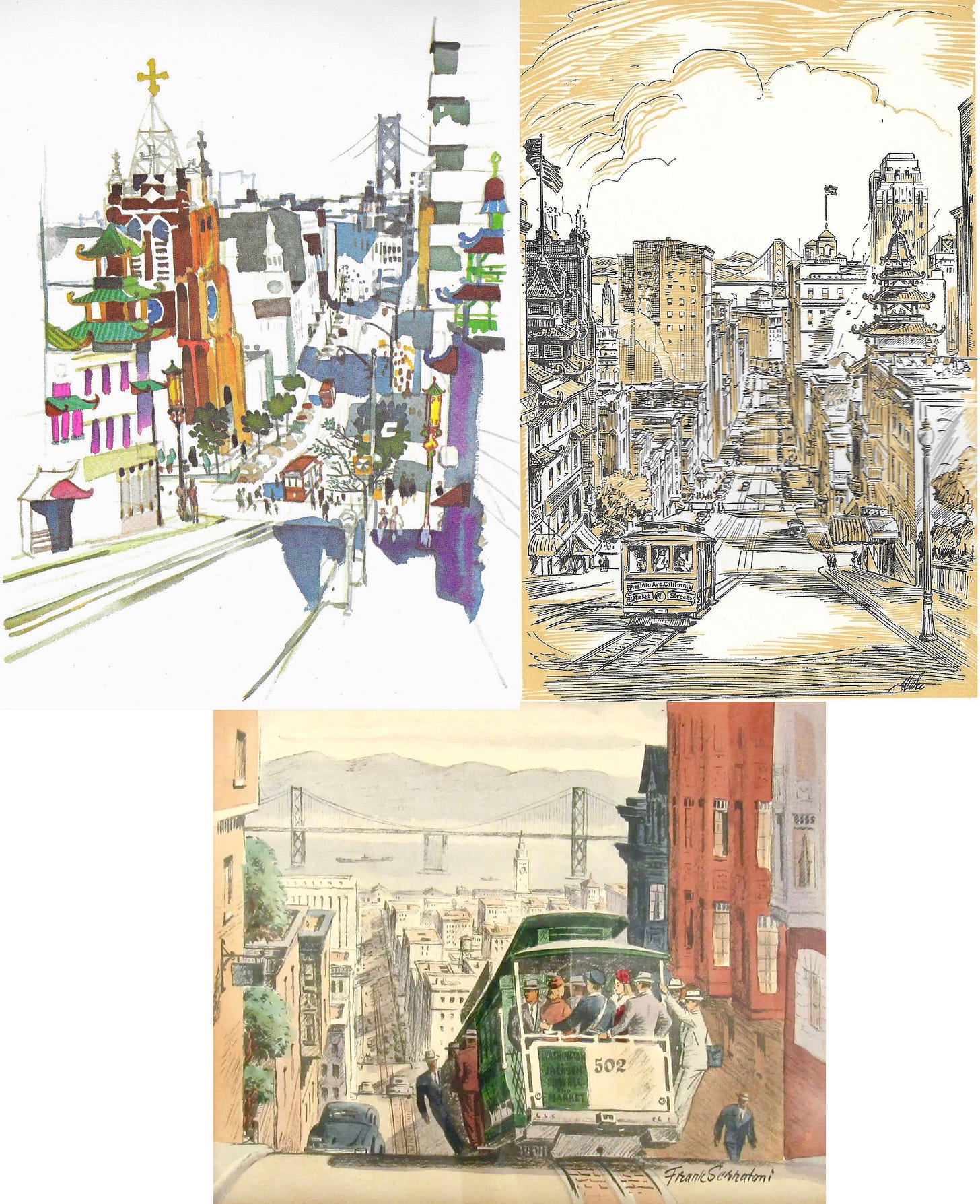
Blessed with its seven hills (I swear there are more), San Francisco gains spectacular views of the city and bay from nearly every part of town. Is it our views of hills and water that make the city so picturesque, or is it that we live among them?

Three views that are essentially the same although decades apart, witness to how much things don’t always change. I love that all three include the central arch and bell towers of Our Lady of Guadalupe church — a lesser-known North Beach parish since 1912. Kingman’s version shows the addition of Joseph Eichler’s boxy 999 Green St, completed in 1965.
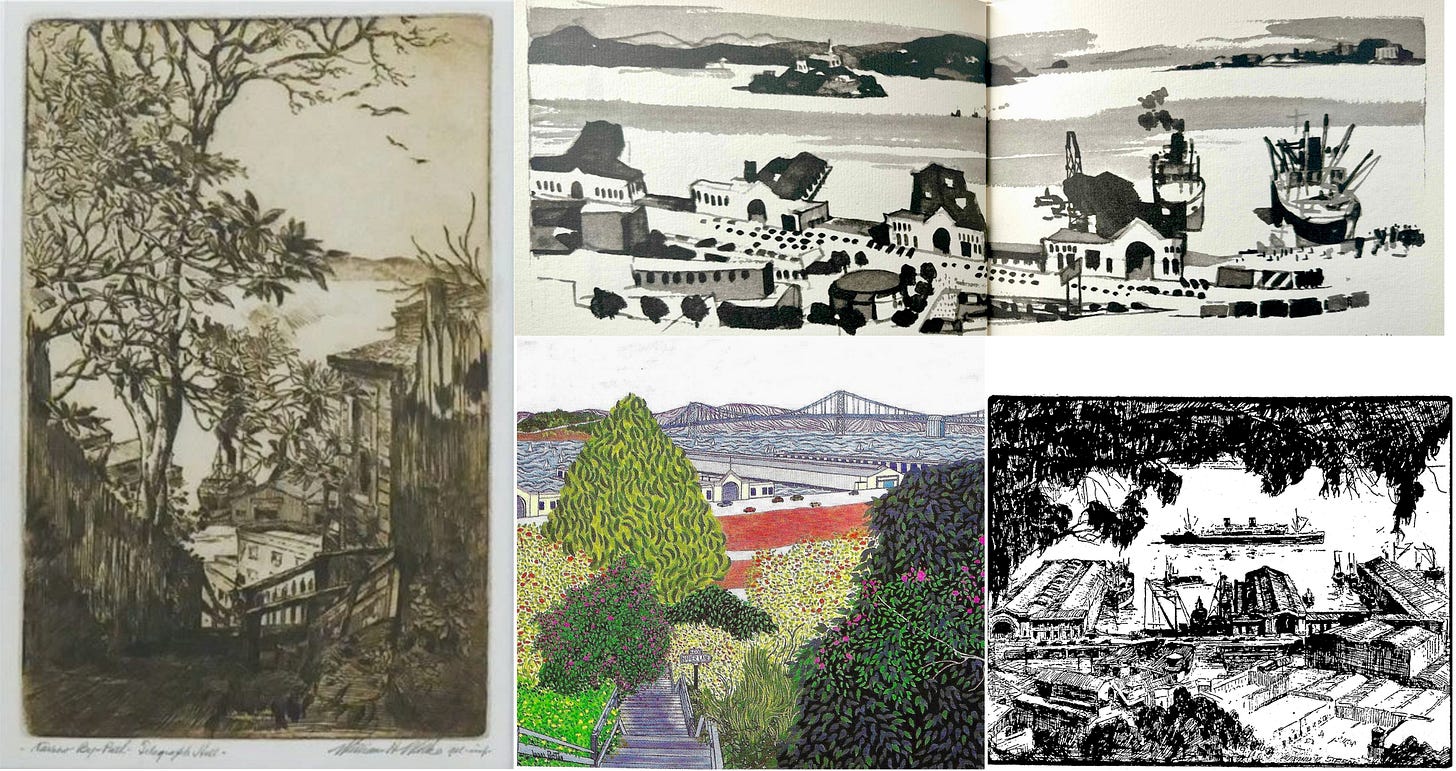

Even the places that have endured have still changed. Foliage grows tall, things are torn down and rebuilt, mistakes are made. One of the most interesting things I’ve found is the renderings of the Embarcadero Freeway (1959-1991), described upon its debut as a “monstrous mistake” by the Chronicle. The illustrations convey a sense of choppiness and disorientation — everything feels a bit wrong and off-kilter.
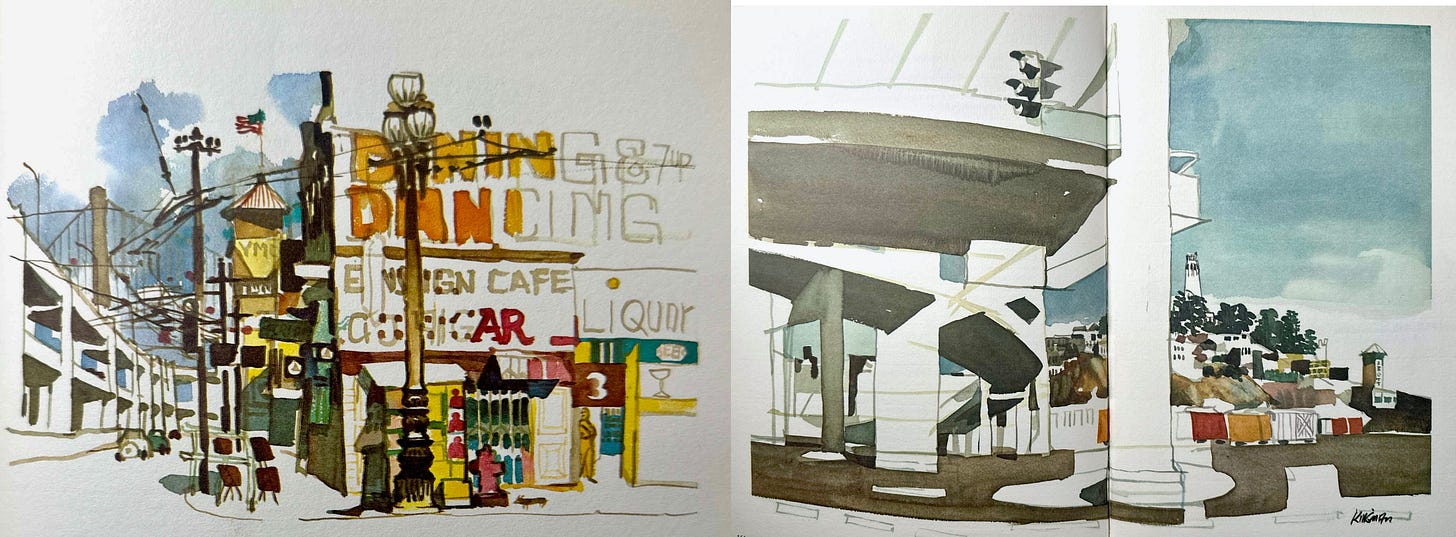
These two show the freeway from opposite ends but to the same effect: congestion and claustrophobia. Both feel like the result of a messy, poorly-planned invasion. What has happened to the glorious view?

Jean Porter’s Ferry Building feels stout and strange, especially with the shortened Bay Bridge behind. Taken from the underside of the freeway curve, the structure frames the view, but cuts it off in a dizzying way. I love Dong Kingman’s elegant rendering of the Market Street lamp posts here — their verticality matches the Ferry Building tower which looks like its been cut off at the knees. Even the patina tones he uses take us back to Old San Francisco. For me, it’s a conversation between the old and the new, and the new is a total impostor.
Another image of times past is found in this vision of Playland (1913 - 1972) with all its color and curiosity peeking out from the edge of the park at Ocean Beach. In this way, cityscape illustration serves as a time capsule, recording the city so we can remember it as it changes.
Apart from the Embarcadero Freeway (may it rest forever), the city does try to cherish its old stand-bys that have endured over the years. Try, because there have been times when landmarks have fallen into disrepair or neglect, as happens in every city. Revival of the fittest is always a great story. For the illustrators, landmarks are a great control subject to reinterpret with new eyes.

I love this trio so much. It ranges from the classical architectural interpretation by Wilke (it’s almost Ruskin-esque), to Kingman’s “barely there” line drawing of the ornate basilica, to Madonna’s interpretation of the light and space between the two churches.


Between these three one would wonder if the Conservatory is green, red, or white! I love the way Jean Porter takes us inside for a totally unexpected view of the many geometries among the organic plant forms.


I love the contrast between these two takes of Huntington Park. Both center around the fountain, but where one makes the checkered pavement a quirky feature, the other opts for a broader, fisheye view of the hilltop, taking in the opulent surroundings.
I thought the best place to conclude is probably the first place in San Francisco that inspires artists: Chinatown. It’s vivid colors, exotic (though ersatz) pagoda architecture, flavors, and sounds are a feast of the senses. It’s also remained mostly unchanged over the years.

Take some time to get out and explore where you live, take in the views, and try to remember how they’ve changed even just in the last year. Do a sketch, take a photo, or just let it inspire you somehow — Chinese food is sounding really good right now!

